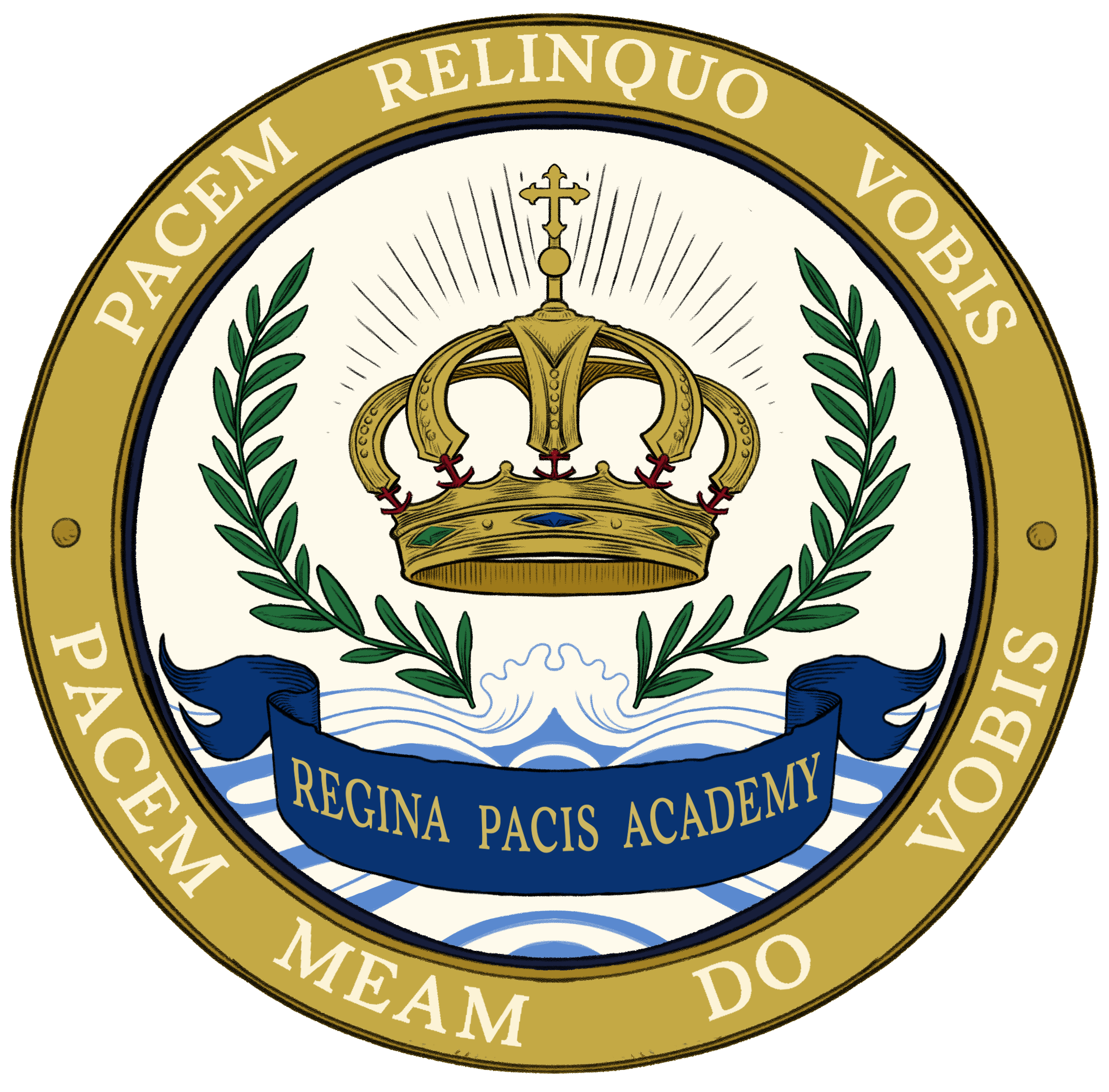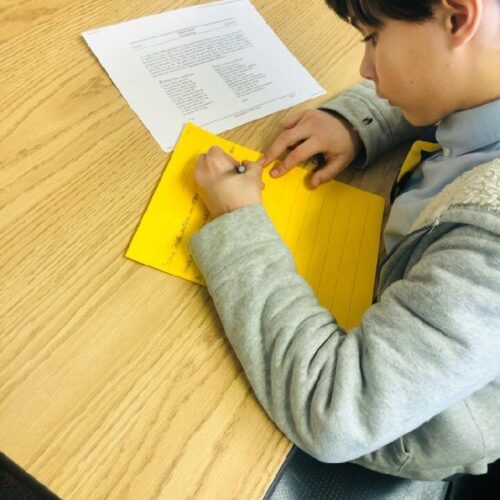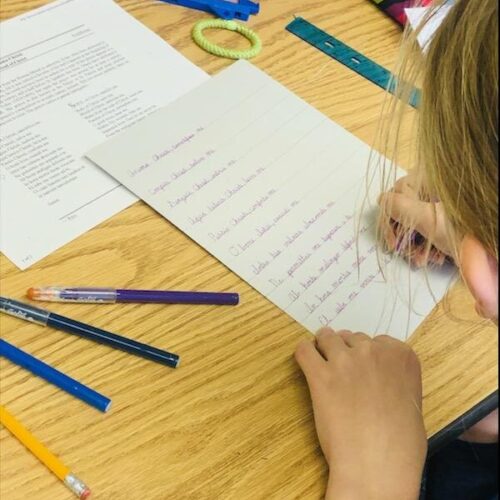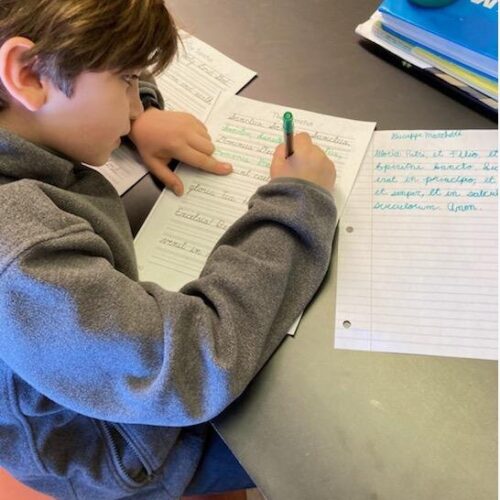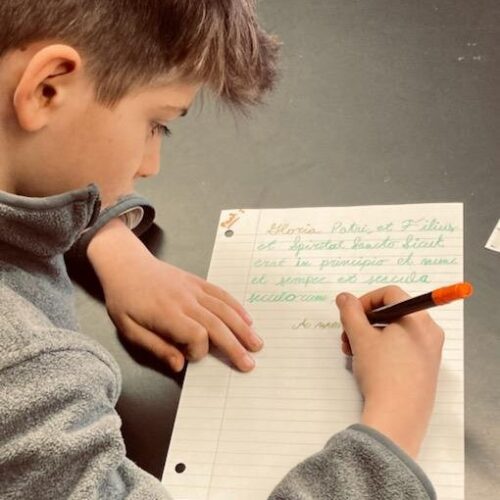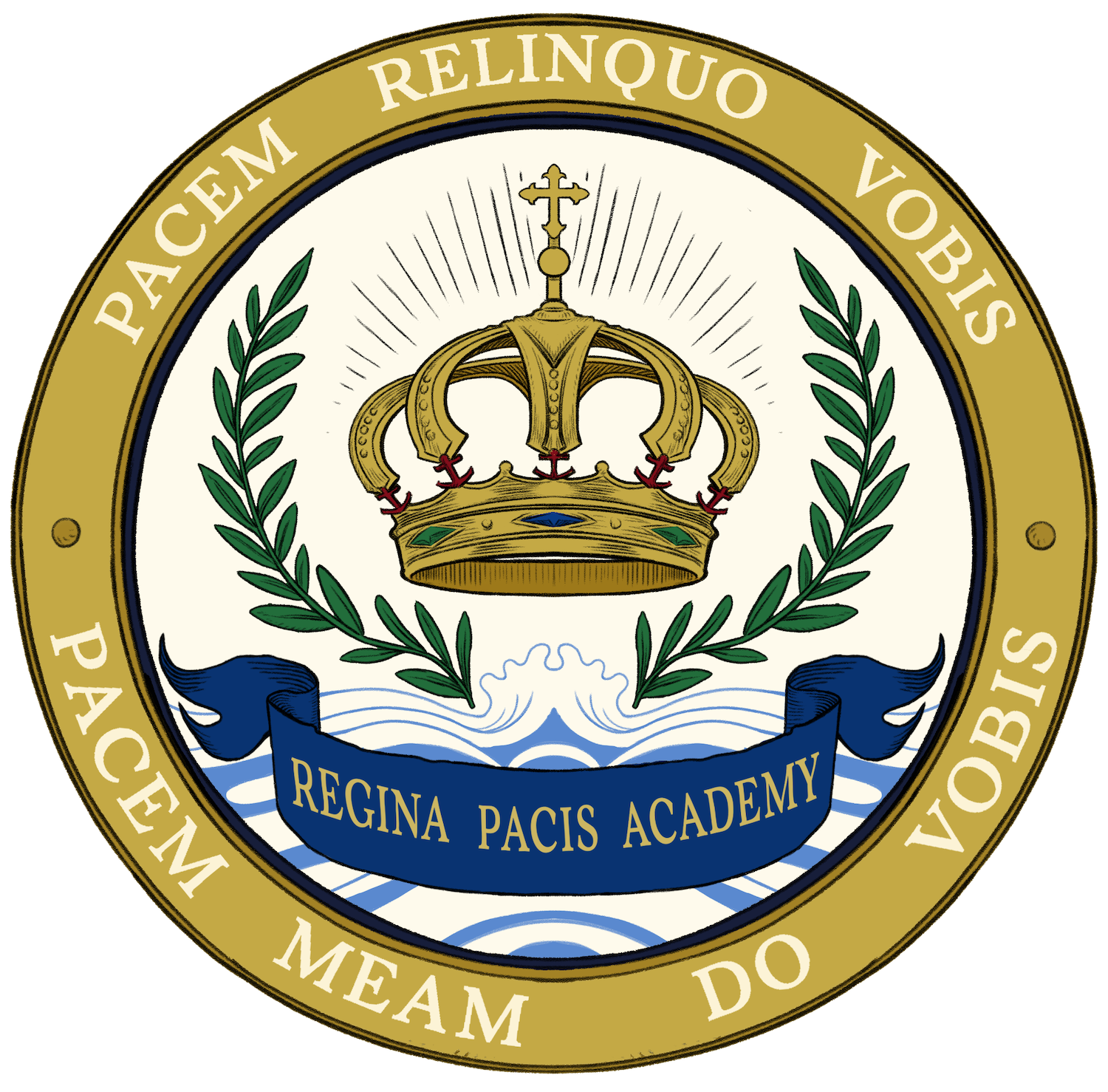For generations, American school children were taught to write in joined letters. Current educational policies have eliminated this essential skill from the curriculum in many schools. As a technology-free school at Regina Pacis Academy, without the installation of screens and keyboards in the classroom, we see cursive handwriting as a vital tool and formational skill, instead of an outdated technology, irrelevant in the modern digital world.
- Teaching handwriting identifies areas of student weakness.
Cursive is often easier for students with learning disabilities, such as dyslexia. - Studies are showing the action of writing, particularly cursive writing, stimulates and engages the brain in ways typing, and even printing, does not.
- In particular, writing notes has been shown to help one retain the information better than typing notes.
- Evidence suggests that cursive helps with the flow of thoughts for better writing.
- It is also believed that writing out words, instead of just typing them, helps one to retain the correct spelling.
- It is often necessary to be able to read cursive for primary sources, and reading cursive activates different parts of the brain than reading print.
- A student will never know if he or she has beautiful print or cursive if he or she never learns how to write these correctly!
